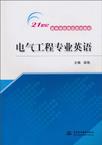电气工程专业英语
出版时间:2010-9 出版社:中国水利水电 作者:陆地 编 页数:207
前言
本书是21世纪高等学校精品规划教材,是为电气工程及其自动化专业方向而编写的专业英语教学用书。专业英语是在大学基础英语学习完成以后开设的,目的是使学生进一步巩固和提高英语水平,培养学生阅读相关专业资料的能力,使学生了解学科前沿。书中内容比较新颖,文体规范,难度适中。内容主要涉及电机与电器、电力系统及其自动化、高电压与绝缘技术、电力电子与电力传动、电工理论与新技术,力求反映电气工程及其自动化专业的主要方向。全书共分八章,包括电路理论基础,电子电路,电机,电力系统,电力系统设备与保护,控制系统与电力电子,绝缘、防雷与接地,其他。每章节附有词汇和注释,以配合教学的需要。 参加本书编写的单位和人员有:西安建筑科技大学陆地、于瑛、许岩,西安交通大学刘姝玮,长安大学陆路,清华大学许路,西安电子科技大学姚若玉,陕西教育学院黄希敏等。其中前言、第一章、第三~第五章、第八章第一~第六节由陆地编写;第二章由刘姝玮编写;第六章第一~第五节由于瑛编写;第六章第六~第九节由许岩编写;第七章第一~第三节由陆路编写;第七章第四~第六节由许路编写;第八章第七~第八节由姚若玉编写;第八章第九~第十节由黄希敏编写。本书由陆地担任主编,负责全书的统稿、定稿工作;由于瑛、刘妹玮担任副主编,负责全书的校对工作。 本书由长安大学段晨东、西安建筑科技大学杨延龙主审并提出了宝贵的意见和建议,谨在此表示衷心的感谢!
内容概要
本书是21世纪高等学校精品规划教材,是为电气工程专业方向而编写的专业英语教学用书,内容主要涉及电机与电器、电力系统及其自动化、高电压与绝缘技术、电力电子与电力传动、电工理论与新技术。全书共分八章,包括电路理论基础,电子电路,电机,电力系统,电力系统设备与保护,控制系统与电力电子,绝缘、防雷与接地,其他。每章节附有词汇和注释,以配合教学的需要。 本书是高等学校电气工程及其自动化专业本科生专业英语的基本教材,亦可作为其他电类专业的教材,还可作为有关工程技术人员的阅读参考书。
书籍目录
前言Chapter 1 Circuit Theory Fundamentals Section 1 Current and Voltage Section 2 Circuit Elements Section 3 Ohm's Law Section 4 Kirchhoff's Laws Section 5 Basic Analysis Methods Section 6 Sinusoidal AC Circuit Analysis and Three-Phase CircuitsChapter 2 Electronic Circuits Section 1 Introduction , Section 2 Semiconductor Cells Section 3 The Integrated Circuits Section 4 Digital Logic Section 5 MemoryChapter 3 Electric Machinery Section 1 Principle of Operation of an Induction Machine Section 2 Performance Characteristics of Induction Motors Section 3 Synchronous Machines Section 4 DC MachinesChapter 4 Electric Power Systems Section 1 Introduction Section 2 Components of Power Systems Section 3 Coal-Fired Power Plants Section 4 Hydropower Plants Section 5 Nuclear Power Plants Section 6 Operation and Control of Power Systems Section 7 Power System StabilityChapter 5 Power System Equipments and Protection Section 1 Transformer Section 2 Switches Section 3 Circuit Breakers Section 4 Relays Section 5 Fuses Section 6 Cables Section 7 Protective Relaying Section 8 Distance Protection Section 9 Harmonics in Power System Section 10 Power QualityChapter 6 Control Systems and Power Electronics Section 1 Introduction to Control Systems Section 2 Determination of the Overall Transfer Function Section 3 Control-System Characteristics Section 4 Frequency Response Section 5 Introduction to Modern Control Theory Section 6 Neural Network and Fuzzy Controller Section 7 Fuzzy Control and AI Section 8 PWM Inverter Drive Section 9 HVDC TransmissionChapter 7 Insulation, Lightning and Grounding Section ,1 Introduction of Electrical Insulation Section 2 Transmission Line Insulation Section 3 Overvoltage Due to Lightning Section 4 Lightning Strokes and Arrester Section 5 Lightning Shielding of Transmission Lines Section 6 GroundingChapter 8 Others Section 1 Intelligent Buildings Section 2 Internet--the Information Superhighway Section 3 Lifts Section 4 Fieldbus Section 5 Wireless Sensor Networks Section 6 Premises Distribution Systems Section 7 System Integration Section 8 Fire Alarms Section 9 Call, Telephone and Public Address Systems Section 10 Optical Fiber Communication Systems Modeling参考文献
章节摘录
The nature of electrical signals in electronic circuits readily enables the technology tobe divided into classes. One of the classes is analog electronics, another: is digital electron-ics. Both analog and digital electronics use similar electronic elements, but the manner ofuse is different, and the technologies appear to be quite distinct. For this reason we shallstudy them separately until we bring them together as they invariably unite in instrumen-tation and applications. Analog electronics pertains to those systems in which the electrical voltage and elec-trical current are analogous to physical quantities and vary continuously. Electronic circuitsthat reproduce music must have voltages and currents that are proportional to the sound. Ahigh fidelity amplifying system attempts to keep the analogy as true as possible. Analog e-lectronic circuits are carefully designed to make the electrical voltages and currents followthe input signal. If an input signal doubles in amplitude, the output voltage or current alsoshould be double. This is possible because the circuit elements are made to operate withinlimits that preserve the linearity. An electrical voltage that is proportional to temperature and changes smoothly as thetemperature changes is an analog of temperature. If the temperature range is divided intosmall increments, however, and a numerical assignment is made to each increment, thenthe temperature may be indicated by a digital display. As the temperature (voltage) chan-ges smoothly, a decision must be made by an electronic system as to the numerical valueto be displayed as the temperature. The circuit making the decision is called an analog-to-digital converter, ADC. The inverse process is accomplished by a digital-to-analog con-verter, DAC. Digital electronic circuits do not require the linearity of analog circuits. Digital circuitsact as electronic switches and switch from one state to another. The output state, on oroff, is the only signal condition to be examined. In digital circuits the output state is deter-mined by the input signals in a manner as direct as the output voltage of an analog circuit isrelated to the input signal. In digital circuits the relation between input and output statesare expressed as logic equations, and the elements of digital electronics are called logicgates. Logic gates switch between states, on or off, very quickly so that they may operateat many megahertz in computers and other applications.
图书封面
评论、评分、阅读与下载
用户评论 (总计1条)
- 很好,质量不错.和学校发的没区别.
